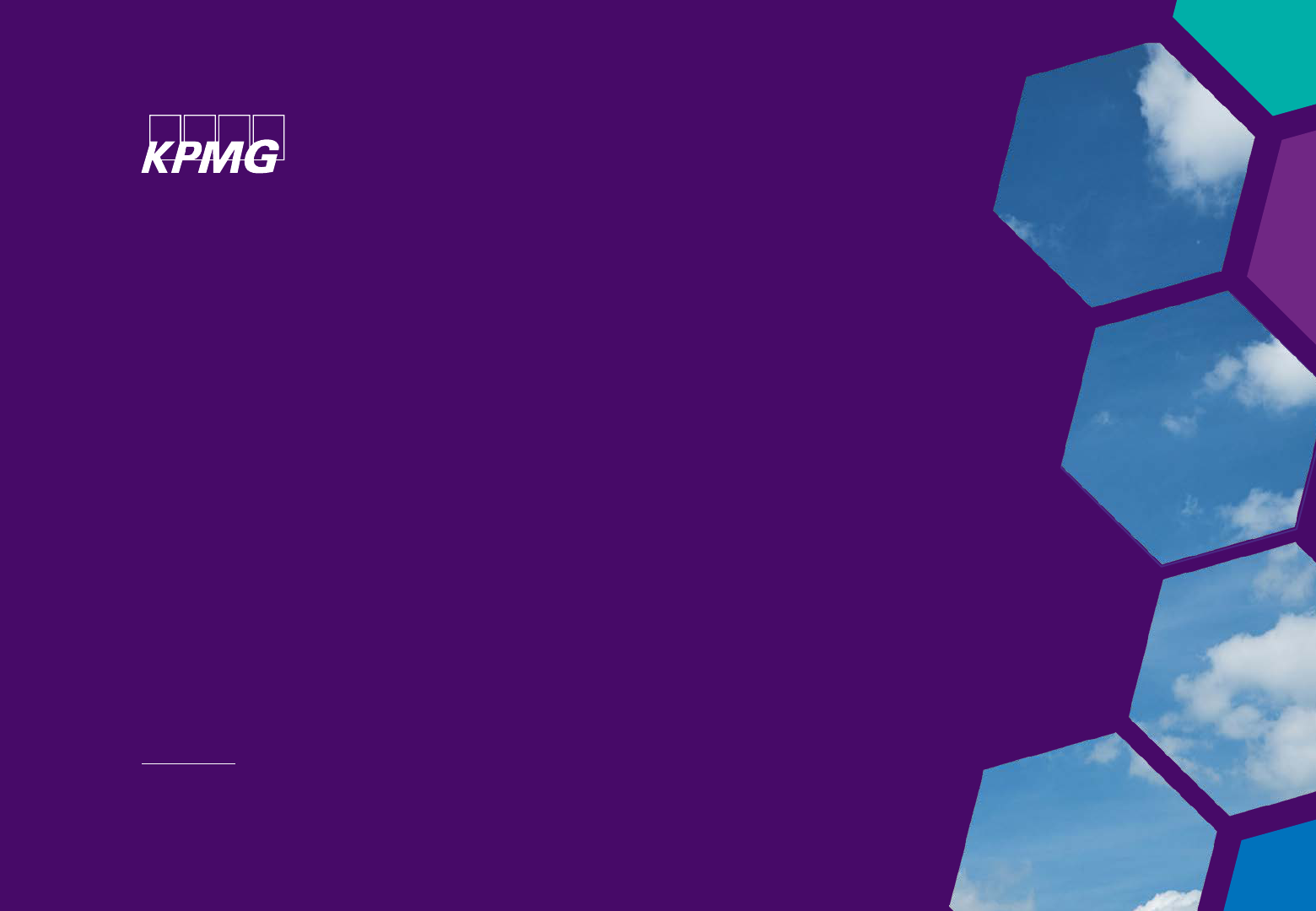
2
© 2021 KPMG IFRG Limited, a UK company limited by guarantee. All rights reserved.
Cloud
implementation
costs
Implementation costs in cloud computing arrangements can
be significant – companies need to determine whether these
costs should be expensed as incurred or capitalised. The
IFRS Interpretations Committee’s (the Committee) March 2021
decision clarifies how to perform this analysis for
implementation costs incurred in a cloud service contract –
i.e. when the customer does not control a software intangible
asset.
The decision clarifies that in a cloud service contract the
customer needs to assess whether the implementation service
is distinct from the service of receiving access to the software.
As such, some companies may need to change their current
accounting policy and could also see an impact in their income
statement as many implementation costs for cloud service
contracts will need to be expensed as incurred.
This guide gives our insight and analysis, including a framework
that helps companies apply the Committee’s decision. Using
this framework, assess your current accounting policy and
determine whether any implementation costs incurred should be
expensed or capitalised.
What’s the
issue?
What’s the
impact?
What’s
next?
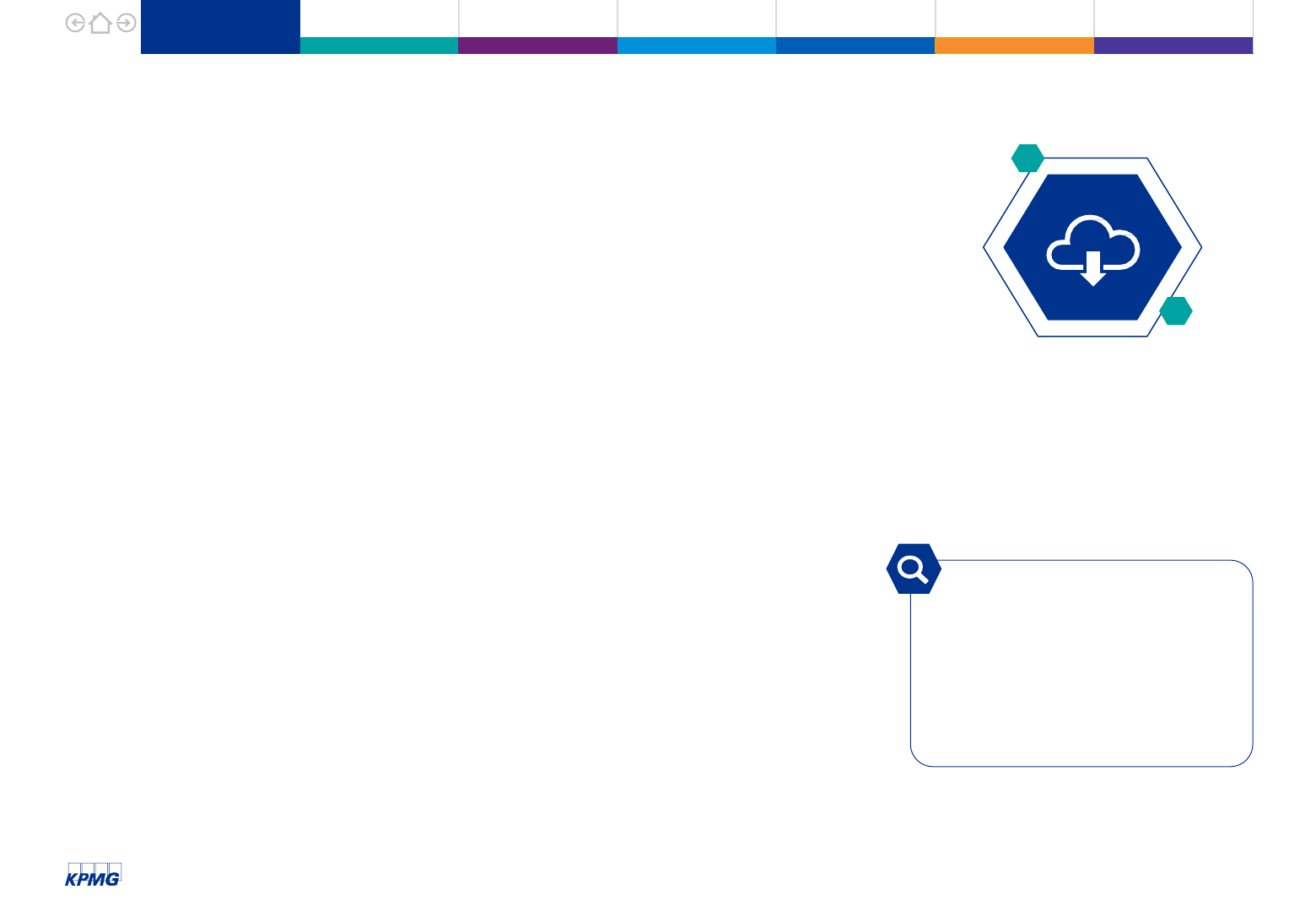
3
© 2021 KPMG IFRG Limited, a UK company limited by guarantee. All rights reserved.
What is cloud computing?
What is cloud computing?
Software asset or service
contract?
Implementation costs for
a service contract
The framework The framework illustrated
Some questions
answered
What’s next?
In a cloud computing arrangement, a customer pays a fee to a
vendor in exchange for access to software over the internet.
The software is hosted by the vendor on the vendor’s
computing infrastructure
1
.
Customers in cloud computing arrangements often incur up-front
costs to implement the software.
The accounting for these implementation costs depends on
whether the customer has a software asset or a service
contract.
1
This differs from an ‘on-premise’ arrangement where a company licenses or purchases a copy of the
software from a vendor and operates the software on its own computing infrastructure.
Examples of implementation
costs
• Testing
• Data migration and conversion
• Training
• Configuration of the software
• Customisation of the software

4
© 2021 KPMG IFRG Limited, a UK company limited by guarantee. All rights reserved.
Cloud computing – Software asset or service contract?
To determine whether it has a software
intangible asset or a service contract, a
company assesses whether it controls the
software.
This drives the accounting for the related
implementation costs.
In our experience, cloud computing
arrangements usually do not give rise to a
software intangible asset under IAS 38.
Does the customer control the software?
Software
intangible asset
Service
contract
Apply IAS 38
Intangible Assets
Capitalise the directly
attributable
implementation costs
of preparing the
software for its
intended use.
Apply the framework
on page 5 which is
based on IFRIC’s
March 2021 agenda
decision
1
to account
for implementation
costs.
1
Configuration or Customisation Costs in a Cloud Computing Arrangement (IAS
38 Intangible Assets)
What is cloud computing?
Software asset or service
contract?
Implementation costs for
a service contract
Applying the framework The framework illustrated
Some questions
answered
What’s next?
Yes
No
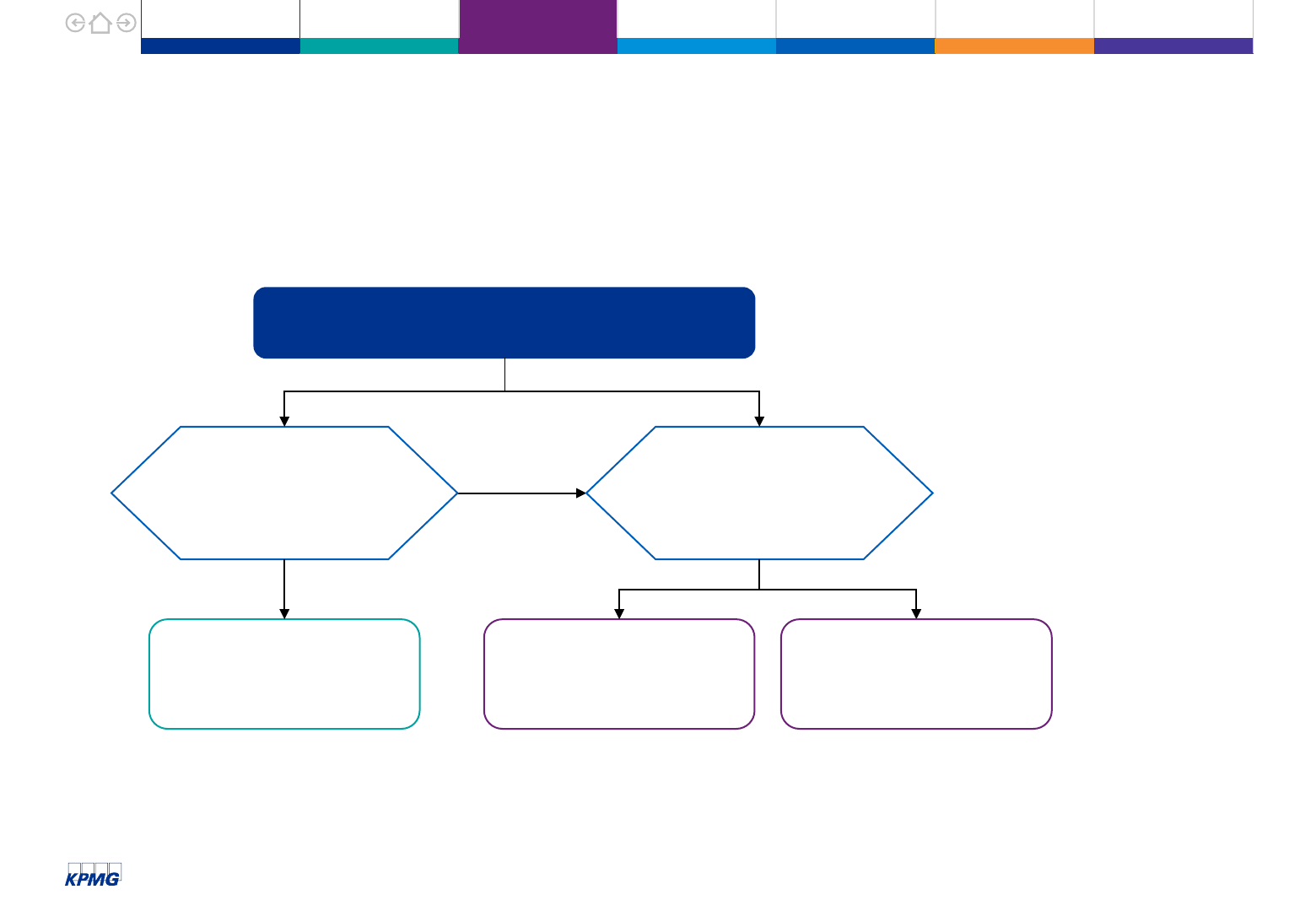
5
© 2021 KPMG IFRG Limited, a UK company limited by guarantee. All rights reserved.
Implementation costs for a service contract
The Committee’s March 2021 agenda decision addressed the accounting for configuration and customisation costs
in a cloud service contract. The following framework is based on the principles in that decision and helps companies
determine how to account for implementation costs in a cloud service contract.
Notes:
1
Includes cases in which the cloud vendor subcontracts services
to a third party.
2
A company may have a prepayment asset if it is paid in
advance.
Is the implementation service performed by the
cloud vendor
1
?
Is the service distinct from
the access to the software?
(See page 6)
Does the expenditure give
rise to a separate
intangible asset under IAS
38? (See page 7)
Yes
No
Yes
Recognise the expense
over the period of the
access to the software
2
Recognise an intangible
asset under IAS 38
Recognise the expense
as incurred – i.e. when
the service is received
Yes
No
No
What is cloud computing?
Software asset or service
contract?
Implementation costs for
a service contract
Applying the framework The framework illustrated
Some questions
answered
What’s next?
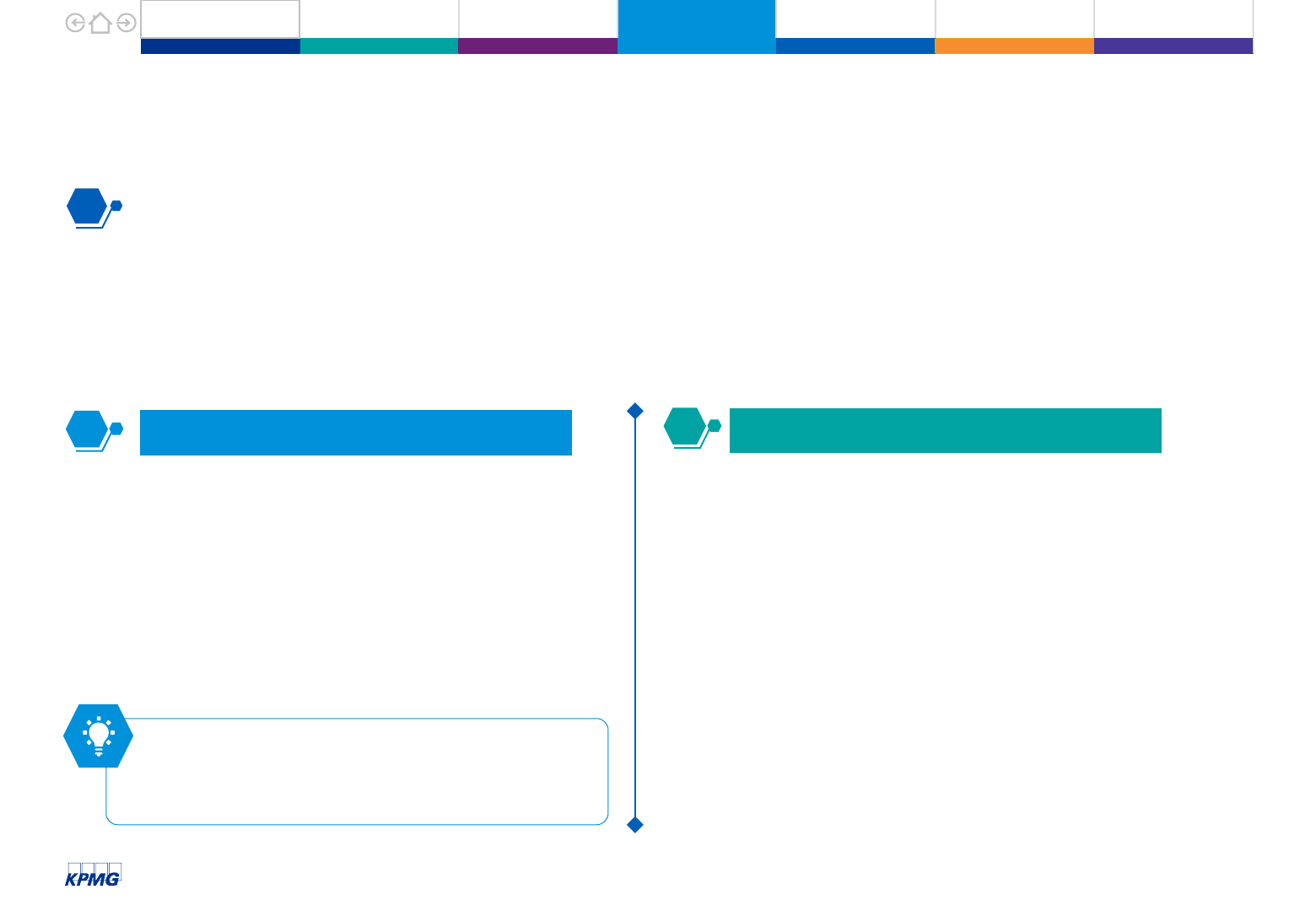
6
© 2021 KPMG IFRG Limited, a UK company limited by guarantee. All rights reserved.
Applying the framework – Is the service distinct?
Is the service distinct from the access to the software – e.g. could it be performed by a company
other than the cloud vendor?
If the cloud vendor performs the implementation service, then the customer assesses whether that service forms part of
the service of receiving access to the software or is distinct. It does this by applying the principles in IFRS 15 Revenue
from Contracts with Customers.
This assessment is not necessary for services performed internally or by a third party other than the cloud vendor
because those services are distinct from the service of receiving access to the software provided by the cloud vendor.
Distinct
If the cloud vendor performs the implementation
service, but another company – e.g. a consulting
company – would be capable of performing the service
without also providing the access to the software, then
the implementation service is generally distinct from the
service of receiving access to the software. This is
because in this case, the cloud vendor’s
implementation service is not integral to the customer’s
ability to derive its intended benefit from the software.
In our experience, most implementation services (e.g.
configuration, data migration and conversion,
interfacing, testing) usually could be performed by a
third party that is not the cloud vendor.
Not distinct
If the implementation service could only be
performed by the cloud vendor, then this indicates
that it is not distinct from the access to the software.
For example, when the cloud vendor agrees to
customise the software by modifying the existing
software code or writing new code, this
customisation service is generally not distinct.
In this case, the related implementation costs are
recognised as an expense as the customer
receives access to the customised software – i.e.
over the contract term.
What is cloud computing?
Software asset or service
contract?
Implementation costs for
a service contract
Applying the framework The framework illustrated
Some questions
answered
What’s next?
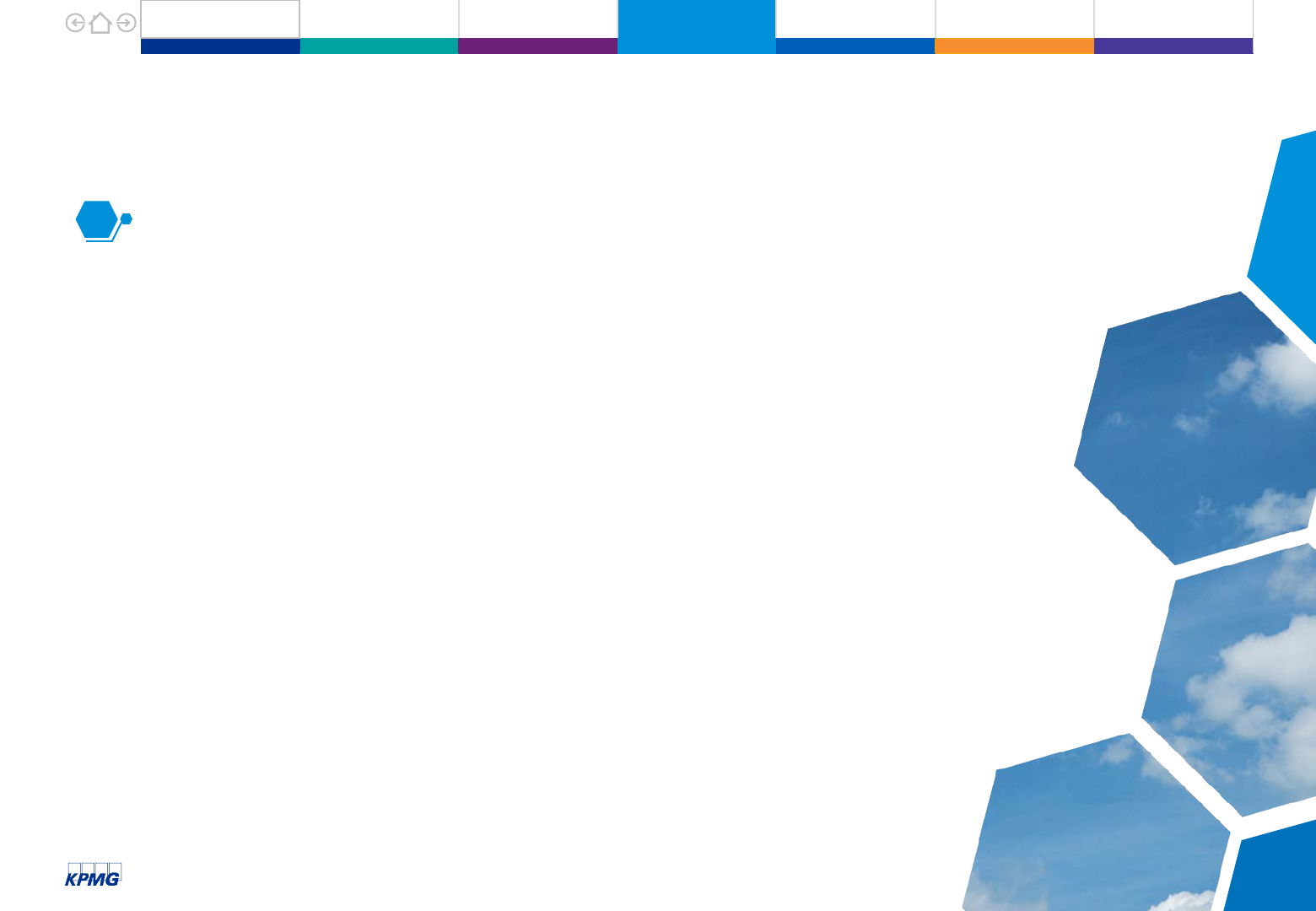
7
© 2021 KPMG IFRG Limited, a UK company limited by guarantee. All rights reserved.
Applying the framework – Is there a separate intangible?
Does the expenditure give rise to a separate intangible asset under IAS 38?
Typically, no. In our experience, there are limited circumstanc
es
1
in which a company
recognis
es a separate intangible asset.
This is bec
ause the directly attributable costs of preparing software for its intended use
are c
apitalised only when a company acquires a software intangible asset (see page 4).
A
cloud service contract contains no such asset. Therefore, a company does not
capitalise the directly attributable costs incurred to prepare the software for its
intended use (e.g. configuration and testing).
What is cloud computing?
Software asset or service
contract?
Implementation costs for
a service contract
Applying the framework The framework illustrated
Some questions
answered
What’s next?
1
The costs to create a new interface between a company’s existing software and the
cloud software could create a separate intangible asset under IAS 38 – e.g. writing
new software code that the company controls.
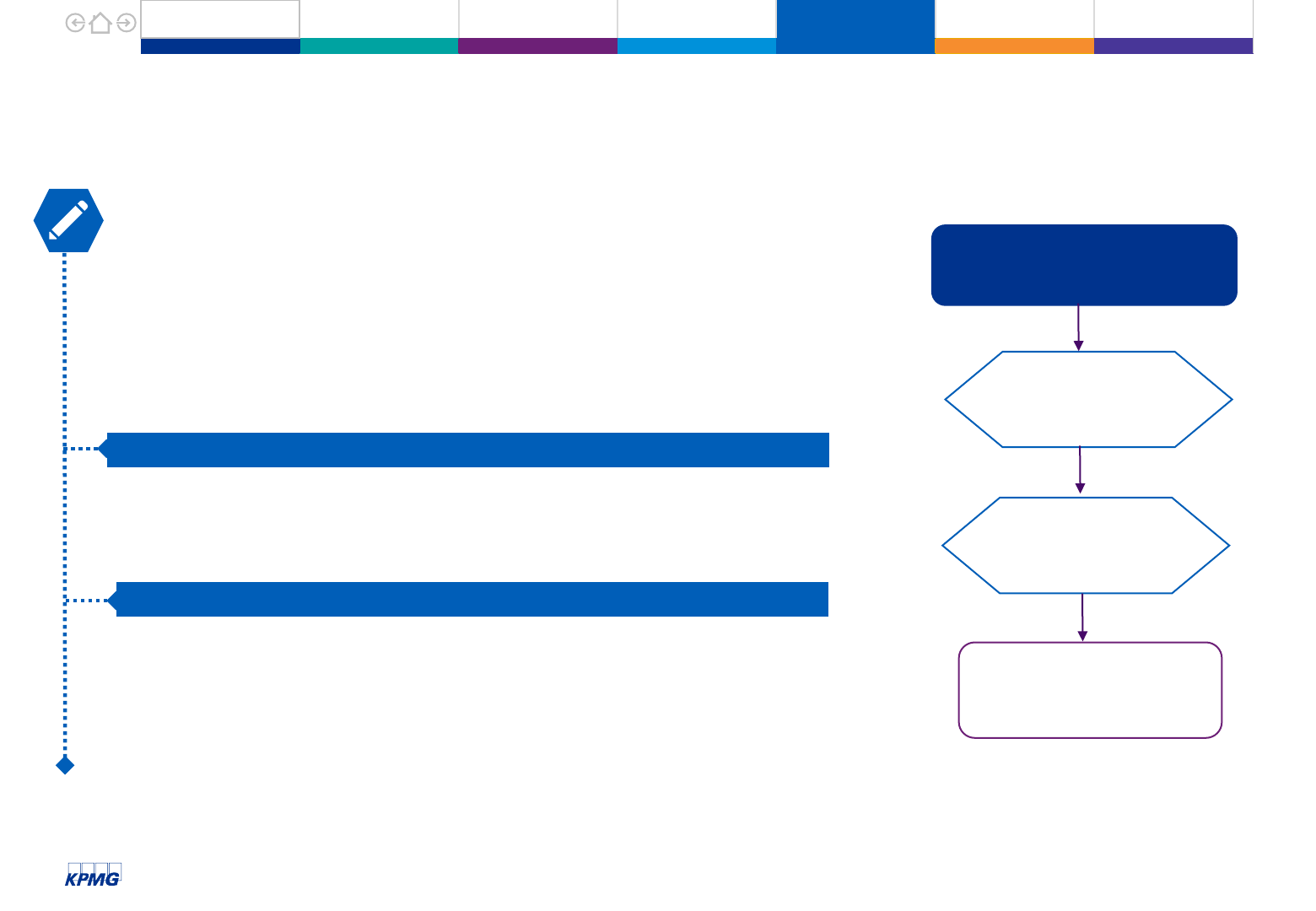
8
© 2021 KPMG IFRG Limited, a UK company limited by guarantee. All rights reserved.
The framework illustrated
Configuration service
Company N enters into a cloud computing arrangement with Supplier T as follows:
– N has access to T’s software for a period of five years for a fee of 500 per year.
– T also agrees to configure the software for N for a fee of 200.
Based on the fact pattern, N determines that it has a service contract with T – i.e. it does not
control the software.
N determines how to account for the configuration costs using the framework.
Is the service distinct from the access to the software?
Yes – N considers that a third party other than T could configure the software without
also providing access to it. Therefore, N observes that T’s configuration service is
not integral to N’s ability to derive its intended benefit from the software.
Does the expenditure give rise to a separate intangible asset?
No – This is because N does not control the configured software that it will access in
the future.
Therefore, N recognises an expense of 200 when it receives the configuration
service. It also recognises an annual expense of 500 over the five-year period of
the cloud arrangement.
What is cloud computing?
Software asset or service
contract?
Implementation costs for
a service contract
Applying the framework The framework illustrated
Some questions
answered
What’s next?
Is the implementation service
performed by the cloud vendor
1
?
Yes
Is the service distinct
from the access to the
software?
Yes
Does the expenditure
give rise to a separate
intangible asset?
No
Recognise the expense
as incurred – i.e. when the
service is received
1
Includes cases in which the cloud vendor
subcontracts services to a third party.

9
© 2021 KPMG IFRG Limited, a UK company limited by guarantee. All rights reserved.
The framework illustrated (cont.)
Customisation service
Company N enters into a cloud computing arrangement with Supplier T as follows:
– N has access to T’s software for a period of five years for a fee of 500 per year.
– T also agrees to customise the software by writing new code that will create an entirely
new functionality that does not yet exist for an additional fee of 300.
– T retains the intellectual property rights to the customised software and can make this
new functionality available to other customers.
Based on the fact pattern, N determines that it has a service contract with T – i.e. it does
not control the software.
N determines how to account for the customisation costs using the framework.
Is the service distinct from the access to the software?
No – N considers that only T is capable of modifying the underlying software code.
Therefore, N observes that it is able to derive its intended benefit from the software only
through T fulfilling both the ongoing access to the software and the customisation
service. N concludes that there is one service in the contract: the access to the
customised software.
N recognises an annual expense of 560 over the five-year period of the cloud
arrangement – i.e. (((500 x 5) + 300) / 5).
What is cloud computing?
Software asset or service
contract?
Implementation costs for
a service contract
Applying the framework The framework illustrated
Some questions
answered
What’s next?
Is the implementation service
performed by the cloud vendor
1
?
Yes
Is the service distinct
from the access to the
software?
No
Recognise the expense
over the period of access
to the software
1
Includes cases in which the cloud vendor
subcontracts services to a third party.
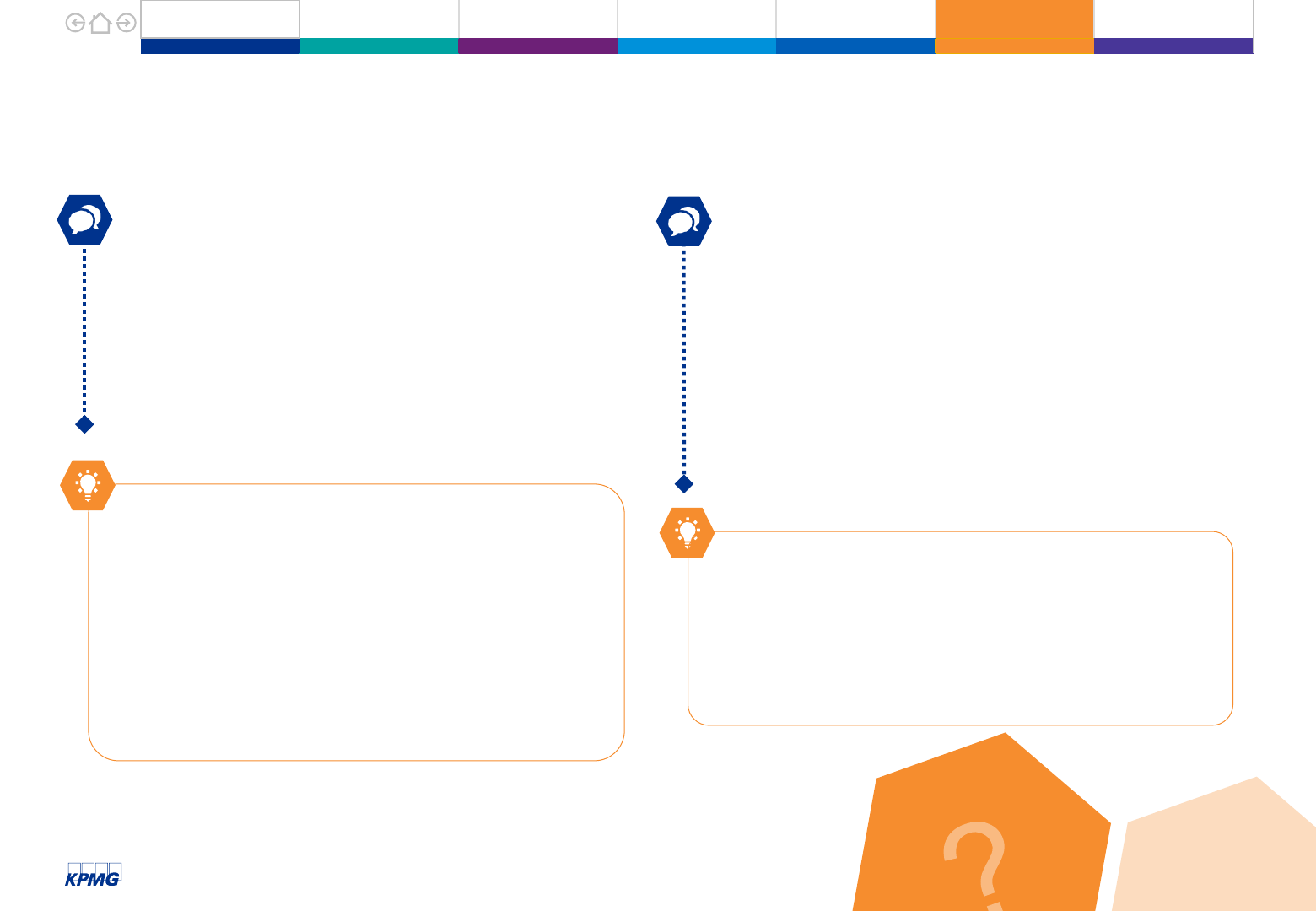
10
© 2021 KPMG IFRG Limited, a UK company limited by guarantee. All rights reserved.
Some questions answered
When is a software intangible asset recognised in a
cloud computing arrangement?
In some limited circumstances, a company may determine
that it controls a software asset if:
• it has the right to restrict the access of others – e.g. the
software vendor and its other customers – to the
economic benefits flowing from the software; or
• it can obtain the benefits from the software without the
software vendor’s hosting services.
Features of a cloud computing arrangement that may
indicate that the company obtains control of a software
intangible asset include:
• the right to take possession of a copy of the software
and run it on the company’s own or a third party’s
computer infrastructure; or
• exclusive rights to use the software or ownership of the
intellectual property for customised software – i.e. the
vendor cannot make the software available to other
customers.
What is cloud computing?
Software asset or service
contract?
Implementation costs for
a service contract
Applying the framework The framework illustrated
Some questions
answered
What’s next?
What implementation costs does a company capitalise
when it controls a software intangible asset?
In the limited cases in which a customer controls a software
intangible asset, the cost of that asset includes the directly
attributable costs of preparing the software for its intended
use. Under paragraph 28 of IAS 38, these costs include
employee benefits and professional fees arising directly from
bringing the software to its working condition, and costs to
test whether the software functions properly.
Consistent with a cloud service contract, implementation
costs that give rise to a separate intangible asset under IAS
38 are also capitalised (see page 7).
Therefore, many implementation costs such as testing,
configuration and customisation of the software are capitalised
because they form part of the cost of the software intangible
asset.
This differs from a cloud service contract in which fewer
implementation costs can be capitalised because the company
does not control a software intangible asset.
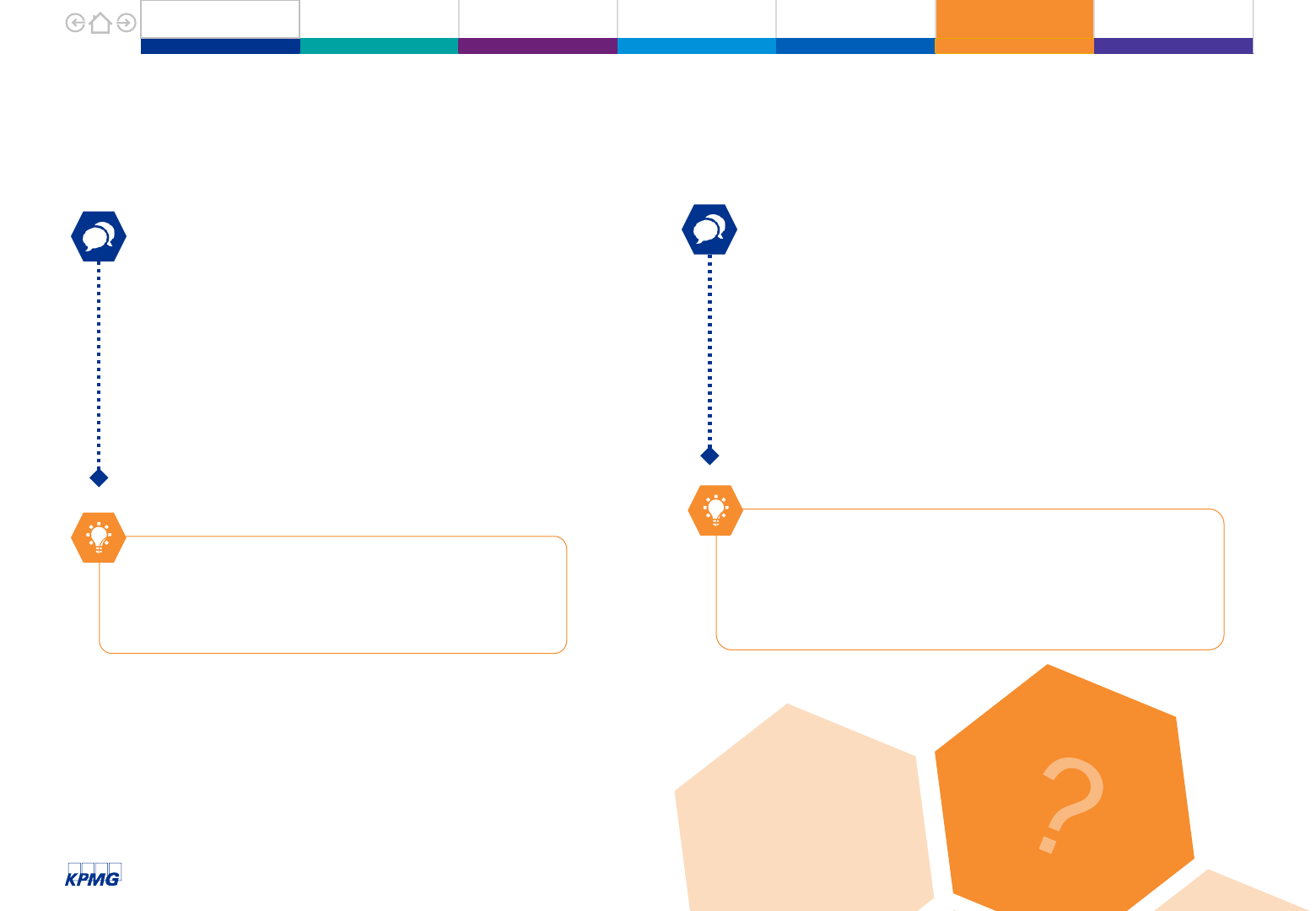
11
© 2021 KPMG IFRG Limited, a UK company limited by guarantee. All rights reserved.
Some questions answered (cont.)
What is the difference between configuration and
customisation?
‘Configuration’ involves changing the default settings of
the vendor’s software to function in a particular way – e.g.
setting various ‘flags’ or ‘switches’ within the vendor’s
software or defining certain values or parameters to
implement a particular set-up of the software’s existing
functionality.
‘Customisation’ involves modifying the vendor’s existing
software code or writing new code to change or create
additional functionalities.
In our experience, configuration services are
typically distinct from the access to the software
while customisation services are typically not
distinct.
Is the accounting outcome for implementation costs
driven by which party performs the service?
No. It is based on the nature of the service. When a party
other than the cloud vendor performs the implementation
service, no ‘distinct’ test is necessary. This is because the
implementation service is inherently distinct.
Contractual restrictions requiring the customer to use the
software vendor do not impact the analysis of whether an
implementation service is distinct because it is based on
the nature of the service.
What is cloud computing?
Software asset or service
contract?
Implementation costs for
a service contract
Applying the framework The framework illustrated
Some questions
answered
What’s next?
If a cloud arrangement includes multiple distinct
services that are received over different periods, then a
company may need to allocate the total consideration
paid to each service – e.g. based on the relative stand-
alone price of each service.
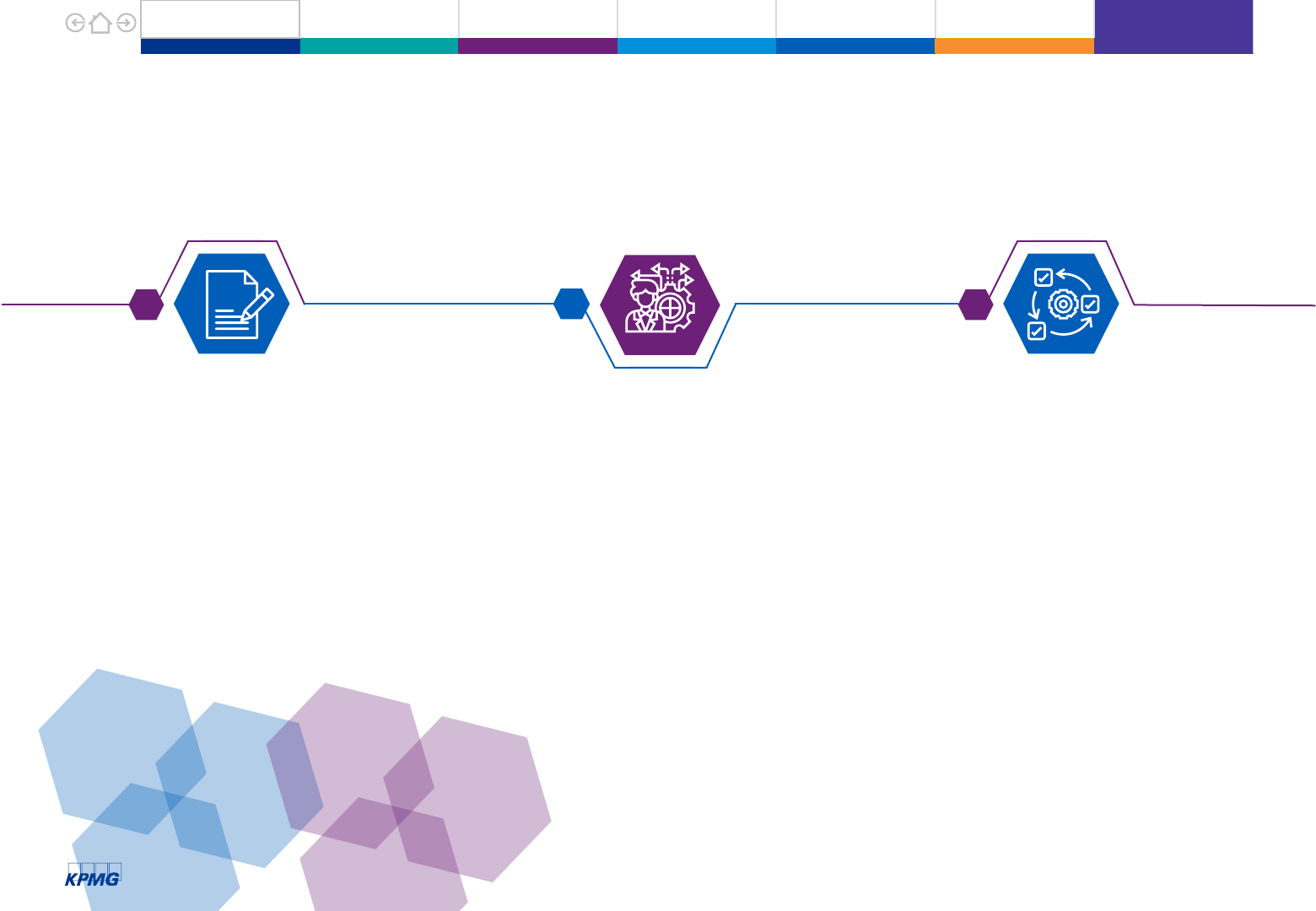
12
© 2021 KPMG IFRG Limited, a UK company limited by guarantee. All rights reserved.
What’s next?
– Consider the Committee’s March 2021
agenda decision on Configuration or
Customisation Costs in a Cloud
Computing Arrangement (IAS 38
Intangible Assets).
Agenda decision
– Understand how your company might
be affected by the Committee’s
agenda decision.
– Consider whether your current
accounting policies remain appropriate
or whether you need to change your
accounting policy.
– If you are affected, then account for the
resulting changes as a change in
accounting policy – i.e. retrospectively.
Accounting policies
– Consider whether you have the
appropriate controls and processes in
place.
– When entering into new cloud
computing arrangements, think about
the accounting implications in
advance.
– You will need to ensure you have the
systems, processes and controls to
track and analyse different types of
costs and allocate amounts paid to
different services received.
Accounting systems and
processes
What is cloud computing?
Software asset or service
contract?
Implementation costs for
a service contract
Applying the framework The framework illustrated
Some questions
answered
What’s next?
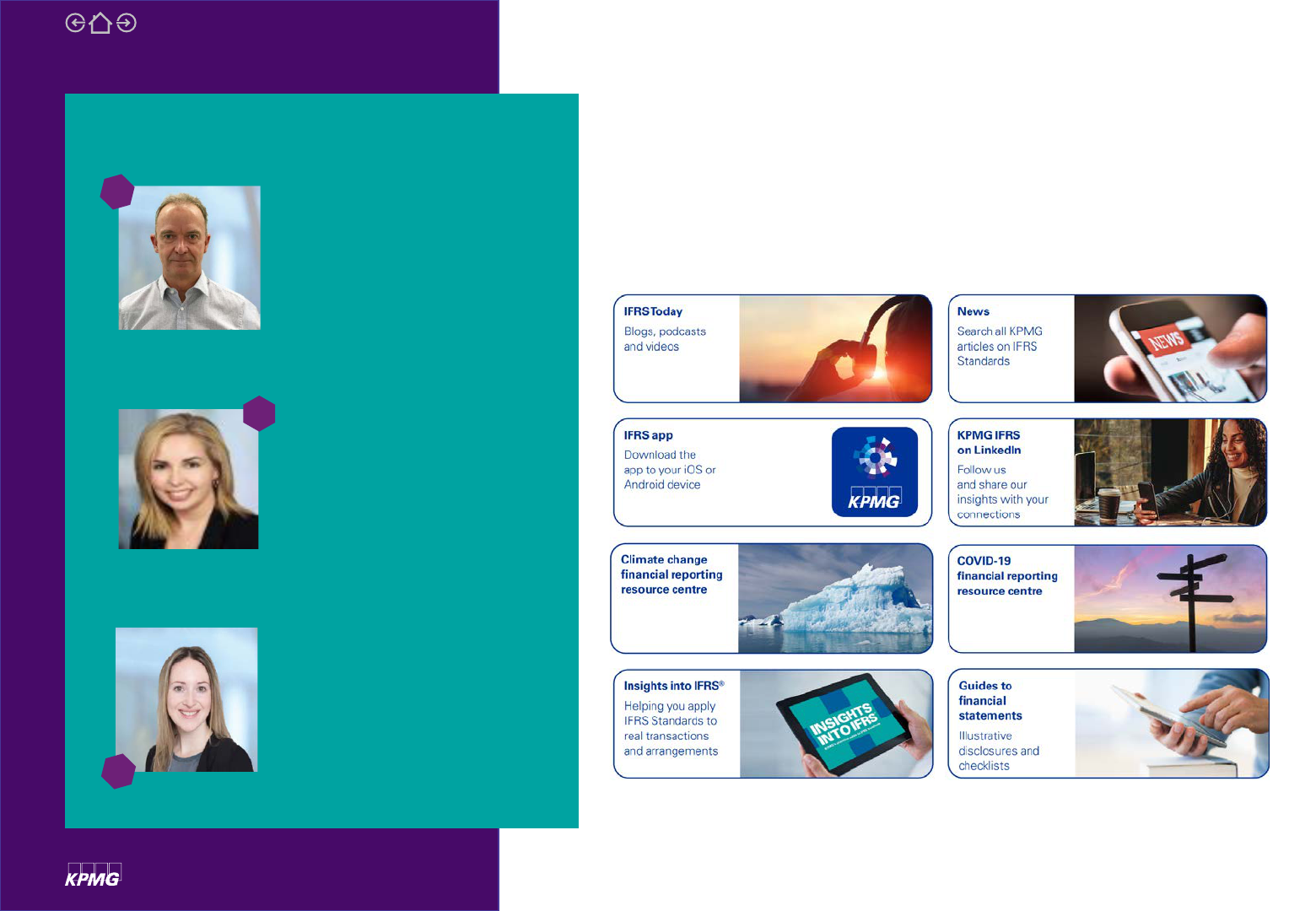
13
© 2021 KPMG IFRG Limited, a UK company limited by guarantee. All rights reserved.
Keeping in touch
Whether you are new to IFRS
®
Standards or a current user, you can find
digestible summaries of recent developments, detailed guidance on complex
requirements, and practical tools such as illustrative disclosures and
checklists.
Peter Carlson
Executive Director
KPMG International Standards Group
Julia LaPointe
Director
KPMG International Standards Group
Tara Smith
Partner
KPMG in South Africa
tara.smith@kpmg.co.za
Follow ‘KPMG IFRS’ on LinkedIn or visit home.kpmg/ifrs.
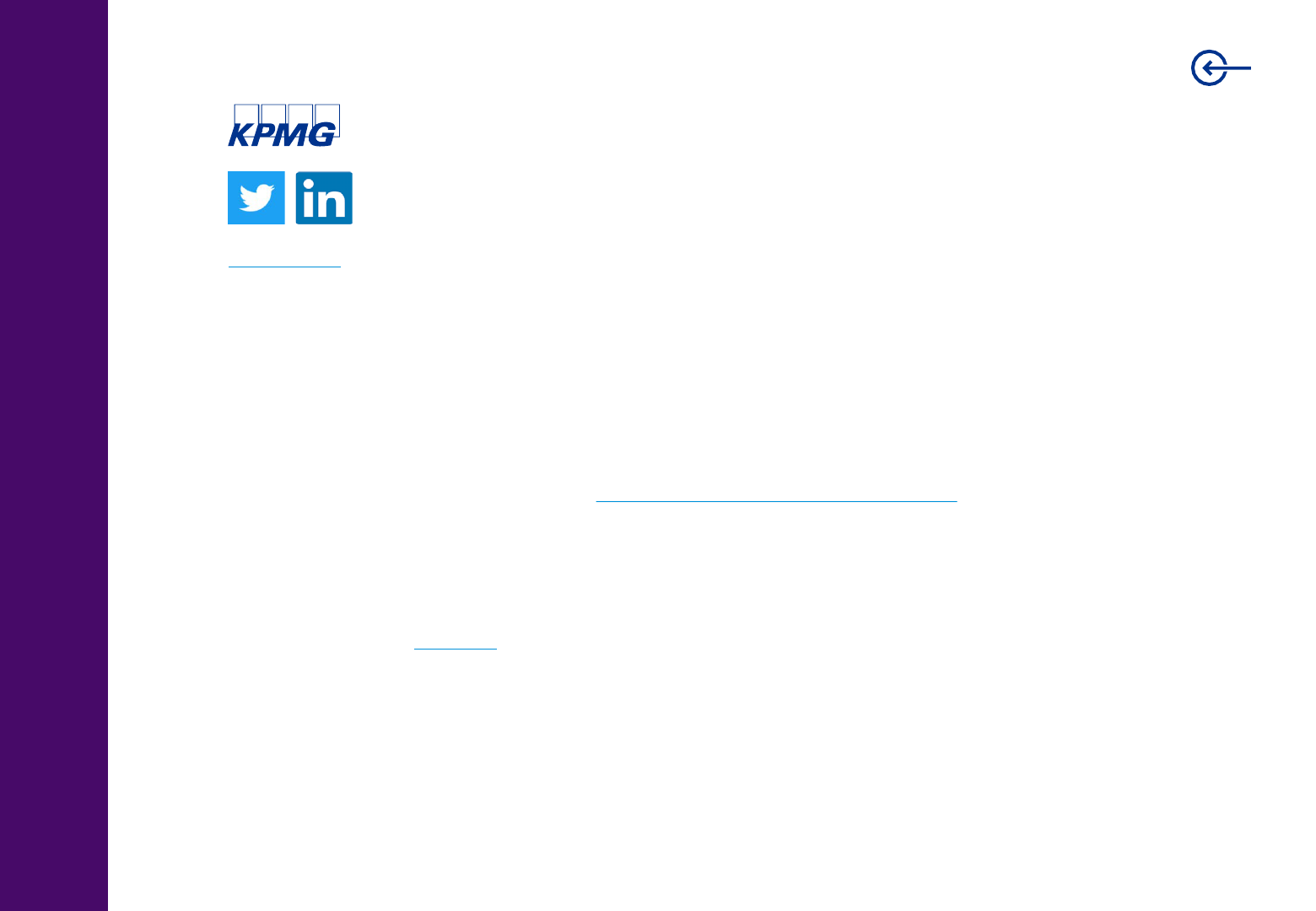
Copyright and disclaimer
home.kpmg/ifrs
Publication name: Cloud implementation costs
Publication number: 137801
Publication date: July 2021
© 2021 KPMG IFRG Limited, a UK company, limited by guarantee. All rights reserved.
The KPMG name and logo are trademarks used under license by the independent member firms of the KPMG global organization.
KPMG International Standards Group is part of KPMG IFRG Limited.
KPMG refers to the global organization or to one or more of the member firms of KPMG International Limited (“KPMG International”), each of
which is a separate legal entity. KPMG International Limited is a private English company limited by guarantee and does not provide services to
clients. For more detail about our structure please visit
https://home.kpmg/xx/en/home/misc/governance.html
The information contained herein is of a general nature and is not intended to address the circumstances of any
particular individual or entity.
Although we endeavour to provide accurate and timely information, there can be no guarantee that such information is accurate as of the date it is
received or that it will continue to be accurate in the future. No one should act upon such information without appropriate professional advice after
a thorough examination of the particular situation.
This publication contains copyright © material of the IFRS
®
Foundation. All rights reserved. Reproduced by KPMG IFRG Limited with the
permission of the IFRS Foundation. Reproduction and use rights are strictly limited. For more information about the IFRS Foundation and rights to
use its material please visit www.ifrs.org.
Disclaimer: To the extent permitted by applicable law the Board and the IFRS Foundation expressly disclaims all liability howsoever arising from
this publication or any translation thereof whether in contract, tort or otherwise (including, but not limited to, liability for any negligent act or
omission) to any person in respect of any claims or losses of any nature including direct, indirect, incidental or consequential loss, punitive
damages, penalties or costs.
Information contained in this publication does not constitute advice and should not be substituted for the services of an appropriately qualified
professional.
‘IFRS
®
’, ‘IASB
®
’, ‘IFRIC
®
’, ‘IFRS for SMEs
®
’, ‘IAS
®
’ and ‘SIC
®
’ are registered Trade Marks of the IFRS Foundation and are used by KPMG IFRG
Limited under licence subject to the terms and conditions contained therein. Please contact the IFRS Foundation for details of countries where its
Trade Marks are in use and/or have been registered.
